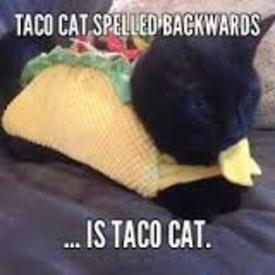Restaurant data?

Does anyone have a go-to place to get nutritional info for restaurants. I find it very frustrating to try to put in a random salad from a restaurant such as the “California Salad” from Doc B’s. It’s not in the app so basically my day’s tracking is thrown off. :(
Answers
-
I'd check the restaurant website first and create a food for what I ate. If there isn't nutritional information on the website, I usually just pick a similar item from a chain restaurant already in the database and call it good enough. Alternatively, you can try to back out of a calorie count by estimating how much of each ingredient or item you're consuming and use those calories.
1 -
What COGypsy said.
Also: If you eat in restaurants frequently, yes, this is worth working at to improve estimates. But if it's like once or twice a week, good approximations are likely to work out OK.
Regardless, there's no sense in stressing over exactitude, because it's all estimates, even when we think we're measuring precisely. (One apple is sweeter than the next, one piece of meat fattier than the next, package labels are allowed to be approximate/averaged, etc.).
Do it as well as practical, then let it go. High odds things will work out fine.
A couple of suggestions:
When it's polite, and I can do it discreetly, I'll snap a photo of my food with my phone - no flash - before eating it. I put something standard sized - like a fork - in the photo, to clarify the size of portions. That helps me estimate later. I also notice whether a dish seems especially oily/fatty/greasy, or especially sugary, as a useful aid to estimating. Then I choose a middling to high estimate from the MFP database for the food, ideally using the routine COGypsy mentioned above, but failing that, preferring database entries that give some indication of portion size, not just "one piece" or "one meal".
If you're a person who uses a food scale at home, you'll get better over time at estimating weights of things by eyeballing, too. Some people - me included - make the home weighing a game, picking a portion of something, guessing the weight, then seeing what the scale says. It's a skill we can hone. I'm sure the same happens if using cups/spoons at home rather than weighing, but I don't do that because weighing is faster and easier as well as more accurate, plus doesn't create extra spoons/cups to wash.
Some people choose their meal at a restaurant in part by how easy it will be to estimate - like maybe a broiled/grilled steak is easier to estimate, something with a sauce and cheese harder. Personally, I'm too much of a hedonist to do that - I want to eat what I want to eat, not let estimating calories control me that way. But I mention it because some others feel differently about that sort of thing.
All through loss, I was eating at restaurants a couple of times a week, sometimes more. In the years of successful maintenance since, it varies lots, but there have been times I ate quite a few restaurant meals and kept my weight where I want it. Estimating can work.
How often restaurant meals happen is potentially important, though: It's our routine daily habits that matter most for weight management. A rare day that's different is a drop in the ocean. The routine daily habits are the ocean.
0 -
Restaurants here don't have nutritional information. Well, fastfood places maybe do, but I generally don't go to those. I just assume that whatever I get from a restaurant, if I do to start with, then it'll be over my calories. It's meant to be something special and unusual.
0 -
weight watchers app has nutritional information for every restaurant under the sun… just sayin’
0 -
Every chain restaurant. In the USA, any establishment with 20 or more locations that are part of the same chain and sell substantially the same menu items have to make nutritional information available. Outside the USA, and outside chains, it can be hard to find that information, as places aren't obliged to provide it.
0 -
just estimate it and enjoy your night out without stressing over the calories. When you're in fat loss mode eating out should be done infrequently.
0 -
Google, it's normally correct.
0
Categories
- All Categories
- 1.4M Health, Wellness and Goals
- 396.4K Introduce Yourself
- 44.2K Getting Started
- 260.8K Health and Weight Loss
- 176.3K Food and Nutrition
- 47.6K Recipes
- 232.8K Fitness and Exercise
- 449 Sleep, Mindfulness and Overall Wellness
- 6.5K Goal: Maintaining Weight
- 8.6K Goal: Gaining Weight and Body Building
- 153.3K Motivation and Support
- 8.3K Challenges
- 1.3K Debate Club
- 96.5K Chit-Chat
- 2.6K Fun and Games
- 4.5K MyFitnessPal Information
- 16 News and Announcements
- 18 MyFitnessPal Academy
- 1.4K Feature Suggestions and Ideas
- 3K MyFitnessPal Tech Support Questions






